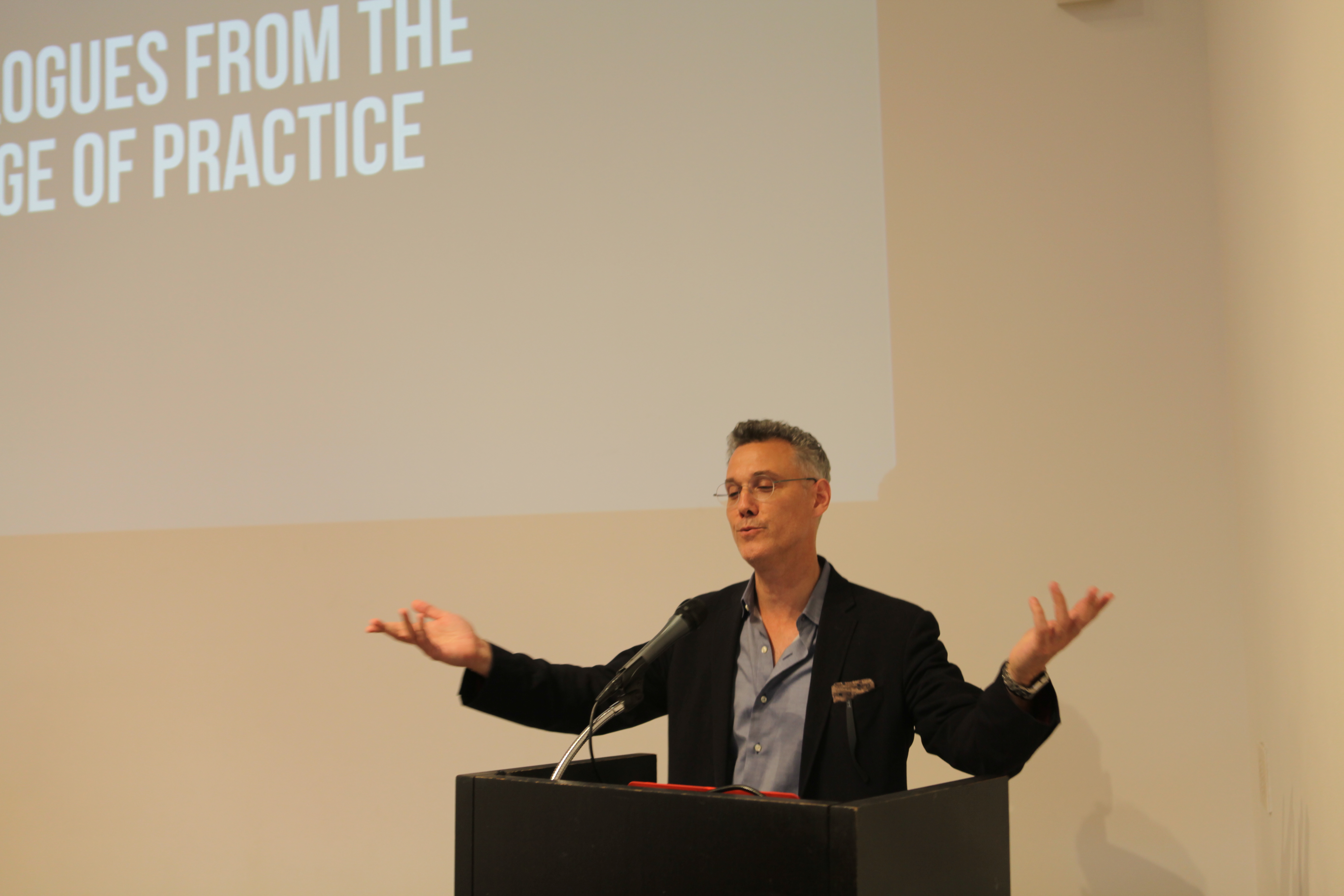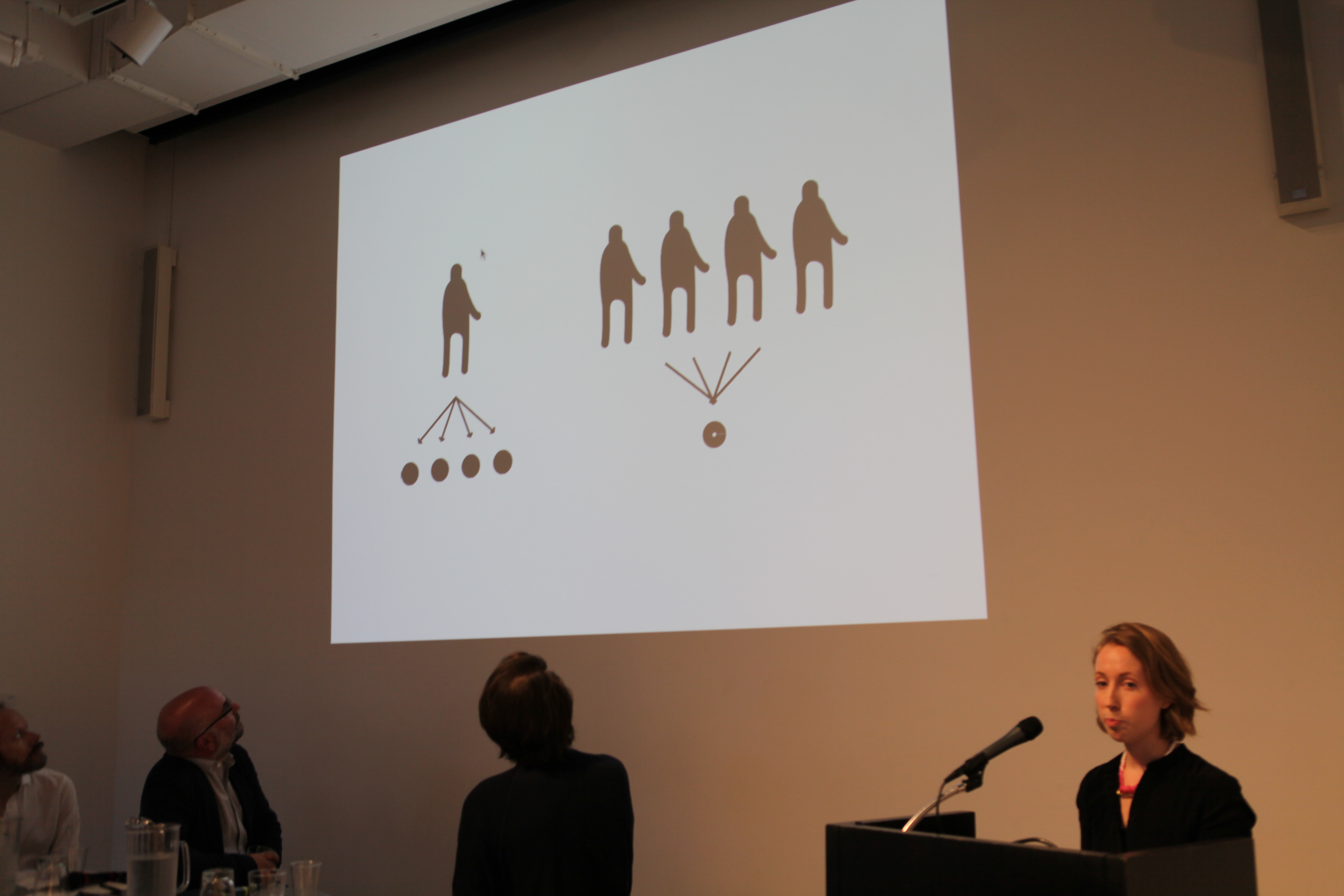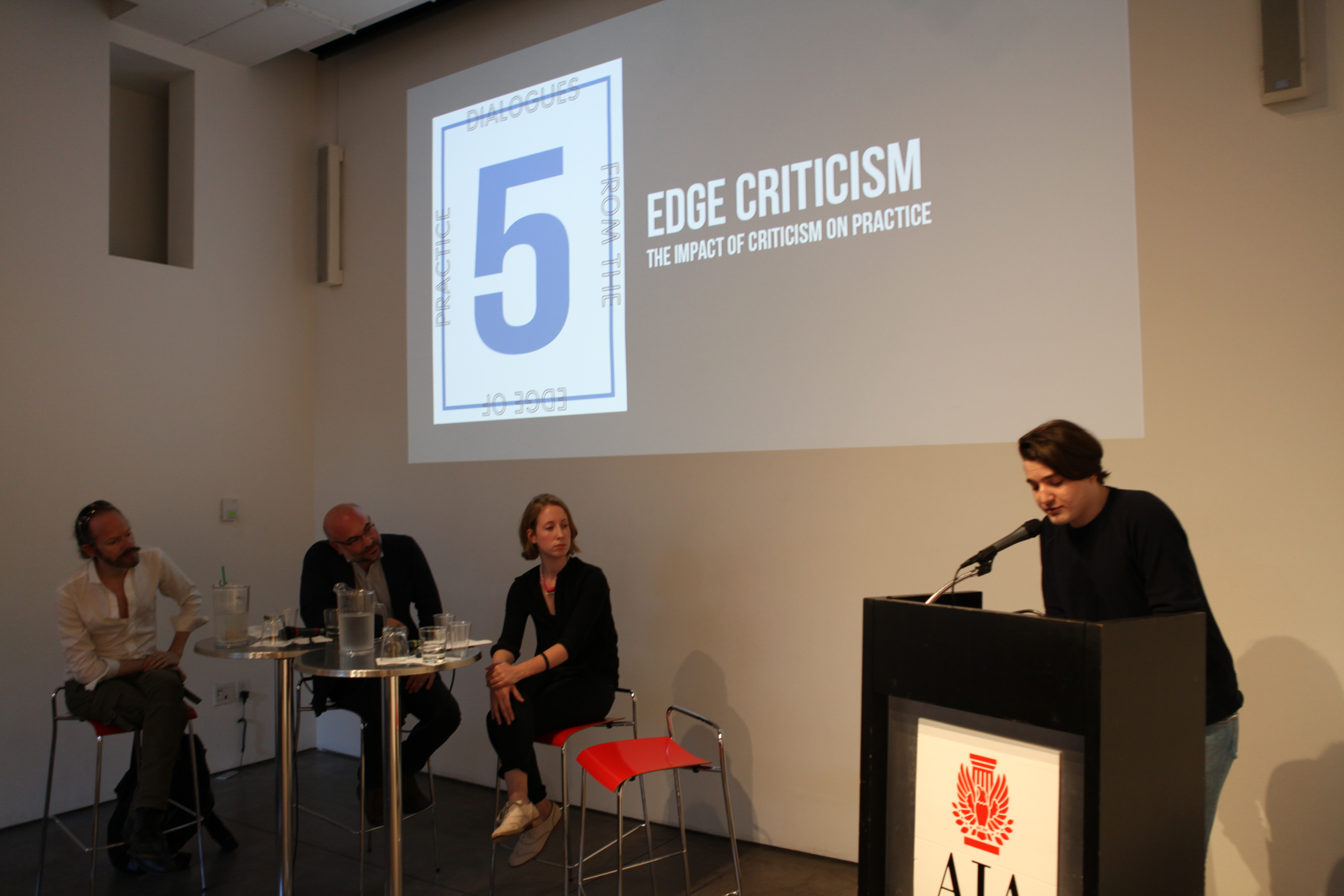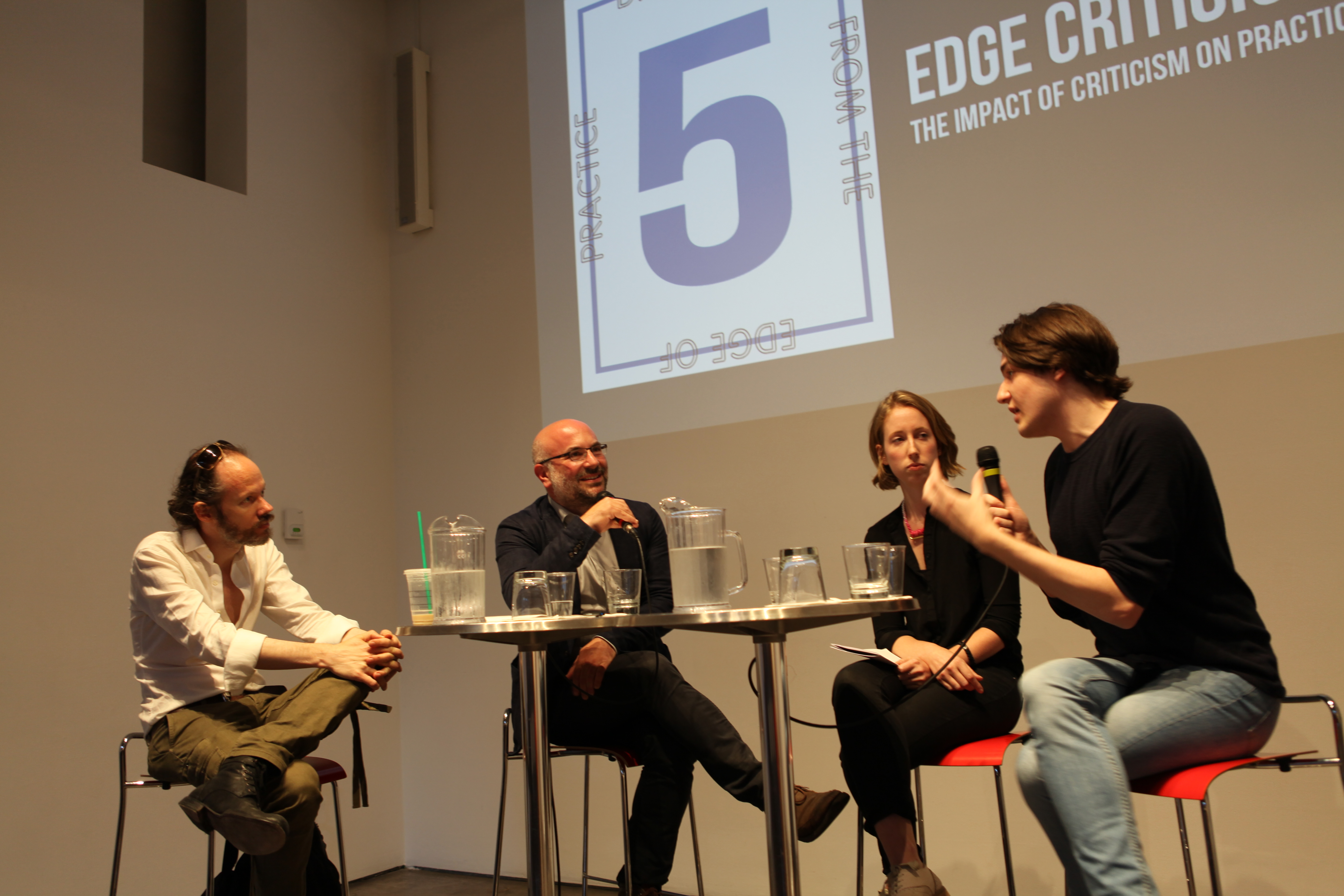by: James Way
“Edge Criticism: The Impact of Criticism on Practice,” the fifth in the presidential theme series of Tomas Rossant, AIA, asked what impact architects should have on criticism and, conversely, how critics would like to influence architecture. In framing an evolution of architectural criticism, Rossant displayed a cover of Oppositions, that early academic journal produced by the Institute for Architecture and Urban Studies, alongside a screen shot of Dezeen, a curated blend of project portfolios and, more recently, interviews and opinion pieces. The former was slow enough that one could digest ideas before the next issue arrived; the latter proliferates multiple posts daily.
To help navigate this transition and illuminate “edge criticism,” Philip Nobel, a journalist whose writings have appeared in every American architectural periodical (so it seems), and now editorial director at SHoP Architects, gathered three panelists from Rossant’s latest themed dinner party. Nobel, who concluded the evening by admitting that he could not pinpoint “edge criticism,” identified itinerant journalists and independent (non-commercial) outlets as “edgy,” but when published in more well-known outlets, critics become squarely part of the establishment.
“Possibilities, suggestions, and tentativeness…is what happens at the edge,” posited Thomas de Monchaux, architect and critic. However, criticism is in a “complicit age of production and consumption.” Architectural spectacle begets media attention regurgitated to the public and designers alike, in an ever-escalating cycle of Instagram photos, confabulated renderings, and aggregating media outlets. Missing is any sense of criticism and public debate, which could be seen as an assault on architectural patrons. De Monchaux maintains there is little reporting about architecture’s historical, political, economic, social, or ethical discourse, but rather a steady diet of “personality profiles, marketing tricks, shopping, and architects modeling” the latest fashions – taste and entertainment.
Clog, co-founded by Julia van den Hout, is a quarterly journal that focuses on one subject intensely through multiple viewpoints. Like a blog, each submission has a 500-word limit that forces authors to “get to the point.” Van den Hout agreed with the other panelists that often criticism is too early or too late by devoting attention to projects that are completed, especially with a journal that takes longer to produce. To van den Hout, the value of criticism lies in its ability to affect the outcome of future projects.
Nikolai Fedak’s blog, New York YIMBY, posts five projects daily. Each has either just been filed with the NYC Department of Buildings or is in very early stages of development. These are not always big projects in hot neighborhoods by known architects with seductive renderings; a recent post included a Chelsea project by Zaha Hadid, a three-family development in College Point, and an affordable housing development. Fedak reasons that criticism is not directed and is missing two key points: the economics of a project and its impact on the public design process. Rather, he noted, most criticism focuses only on eye-catching projects that are well underway and ignores the rest.
De Monchaux reminded the audience that criticism isn’t part of the media, bringing up those academic stalwarts: the desk crit and the pin-up. Fedak correlated this to the “obtusely” scheduled public hearings and approval processes that only retirees and the unemployed wealthy can attend. An audience member asked the difference between criticism and activism; the panel nodded in agreement when de Monchaux answered: “Ideally criticism is activism delivering truth to power.”
James Way, Assoc. AIA, Co-chair of the AIANY Marketing and Communications Committee and Marketing Manager at Morris Adjmi Architects, frequently contributes to eOculus.
Event: Edge Criticism: The Impact of Criticism on Practice
Location: Center for Architecture, 06.29.15
Speakers: Nikolai Fedak, Founder & Editor-in-Chief, New York YIMBY; Julia van den Hout, Founder, Original Copy, and Co-founder, CLOG; Thomas de Monchaux, Architecture Critic, Architect, and Adjunct Assistant Professor, Columbia University Graduate School of Architecture, Planning and Preservation; and Philip Nobel, Editorial Director, SHoP Architects (moderator)
Organized by: Center for Architecture













